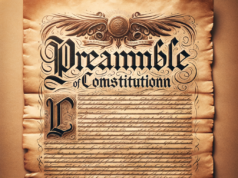Table of Contents
- 1 Understanding the Historical Context of Religious Freedom in the United States
- 2 Key Landmark Cases That Have Defined Religious Rights Over the Decades
- 3 The Role of the Supreme Court in Shaping Religious Freedom Legislation
- 4 Analyzing Recent Cases: Implications for Individuals and Religious Organizations
- 5 The Intersection of Religious Freedom and Anti-Discrimination Laws
- 6 Future Outlook: Trends and Predictions for Religious Freedom Rights in America

In recent years, the landscape of religious freedom in the United States has been marked by a series of landmark legal battles that have not only defined the rights of individuals and organizations but also sparked intense national debate. As courts grapple with the complexities of balancing religious liberties against other societal values, the implications of these cases extend far beyond the courtroom. This article explores the historical context of religious freedom, key landmark cases, the role of the Supreme Court, recent developments, the intersection with anti-discrimination laws, and future trends in this crucial area of American rights.
Understanding the Historical Context of Religious Freedom in the United States
The foundation of religious freedom in the United States can be traced back to the First Amendment of the Constitution, which guarantees the free exercise of religion while prohibiting the establishment of a national religion. This principle emerged from the early settlers’ desire to escape religious persecution, particularly from European powers that enforced state-sponsored religions. Over the centuries, the interpretation of religious freedom has evolved, influenced by social, political, and cultural changes. The American legal framework has been shaped by a commitment to pluralism, allowing diverse religious practices to coexist, while also grappling with the challenges posed by modernity and secularism. This historical backdrop is essential for understanding the ongoing legal battles that continue to redefine the boundaries of religious rights in contemporary society.
Key Landmark Cases That Have Defined Religious Rights Over the Decades
Throughout American history, several landmark cases have significantly influenced the interpretation of religious freedom. One of the earliest and most notable cases, Reynolds v. United States (1879), upheld the federal ban on polygamy, establishing that while individuals could believe what they wished, actions could be regulated by law. Another pivotal case, Engel v. Vitale (1962), ruled that state-sponsored prayer in public schools violated the Establishment Clause, reinforcing the separation of church and state. More recently, Burwell v. Hobby Lobby Stores, Inc. (2014) recognized the rights of closely held corporations to refuse providing contraceptive coverage based on religious objections, highlighting the growing complexity of religious rights in the context of business and commerce. These cases illustrate the dynamic nature of religious freedom jurisprudence and its capacity to adapt to changing societal norms.
The Role of the Supreme Court in Shaping Religious Freedom Legislation
The Supreme Court has played a pivotal role in shaping the legal landscape of religious freedom in the United States. Through its interpretations of the Constitution, the Court has established precedents that either expand or limit religious rights. The justices’ decisions often reflect the prevailing social attitudes and political climates of their times. For instance, the conservative leanings of the current Court have led to a series of rulings that favor religious liberties, such as the aforementioned Hobby Lobby case and Masterpiece Cakeshop v. Colorado Civil Rights Commission (2018), which ruled in favor of a baker who refused to create a cake for a same-sex wedding based on his religious beliefs. As the Court continues to hear cases that challenge the balance between religious freedoms and other rights, its decisions will undoubtedly have lasting implications for the future of religious rights in America.
Analyzing Recent Cases: Implications for Individuals and Religious Organizations
Recent cases have underscored the ongoing tension between religious freedom and other civil rights, particularly in areas such as healthcare, education, and employment. For example, the Little Sisters of the Poor Saints Peter and Paul Home v. Pennsylvania (2020) case reaffirmed the right of religious organizations to opt out of providing contraceptive coverage under the Affordable Care Act, citing religious objections. Such decisions have significant implications for individuals who may be affected by these policies, particularly women seeking reproductive healthcare. Additionally, the rise of cases involving religious exemptions from anti-discrimination laws raises concerns about the potential for discrimination against marginalized groups. As courts continue to navigate these complex issues, the outcomes will shape the operational landscape for religious organizations and their interactions with broader societal norms.
The Intersection of Religious Freedom and Anti-Discrimination Laws
The intersection of religious freedom and anti-discrimination laws presents a complex legal battleground where competing rights often clash. Advocates for religious freedom argue that individuals and organizations should have the right to act according to their religious convictions, even if those actions may conflict with anti-discrimination statutes. Conversely, proponents of anti-discrimination laws assert that allowing religious exemptions can lead to systemic discrimination against LGBTQ+ individuals and other marginalized groups. High-profile cases, such as the Masterpiece Cakeshop decision, illustrate the delicate balance courts must strike between protecting religious liberties and ensuring equal treatment under the law. As societal attitudes evolve, the legal framework surrounding this intersection will likely continue to be tested, prompting further legal challenges and societal discourse.
Future Outlook: Trends and Predictions for Religious Freedom Rights in America
Looking ahead, the future of religious freedom rights in America is poised for significant developments. As the Supreme Court continues to hear cases that challenge the boundaries of religious liberties, we may witness an expansion of rights for religious organizations, particularly in the context of business and healthcare. However, this expansion may come at the cost of increased tension with anti-discrimination laws, particularly as societal norms shift towards greater inclusivity. Additionally, the rise of religious pluralism and the increasing visibility of non-religious perspectives may prompt a reevaluation of how religious freedoms are defined and protected. As these trends unfold, the ongoing dialogue surrounding religious freedom will remain a critical component of the broader conversation about rights and liberties in a diverse society.
The landscape of religious freedom in the United States is continually evolving, shaped by historical precedents, landmark cases, and the ongoing interplay between individual rights and societal values. As courts grapple with these complex issues, the implications for individuals and religious organizations will be profound. The future of religious freedom rights will depend on the ability of the legal system to navigate the delicate balance between protecting deeply held beliefs and ensuring equal rights for all citizens. As America continues to confront these challenges, the outcomes of upcoming cases will undoubtedly play a crucial role in defining the contours of religious freedom for generations to come.
























